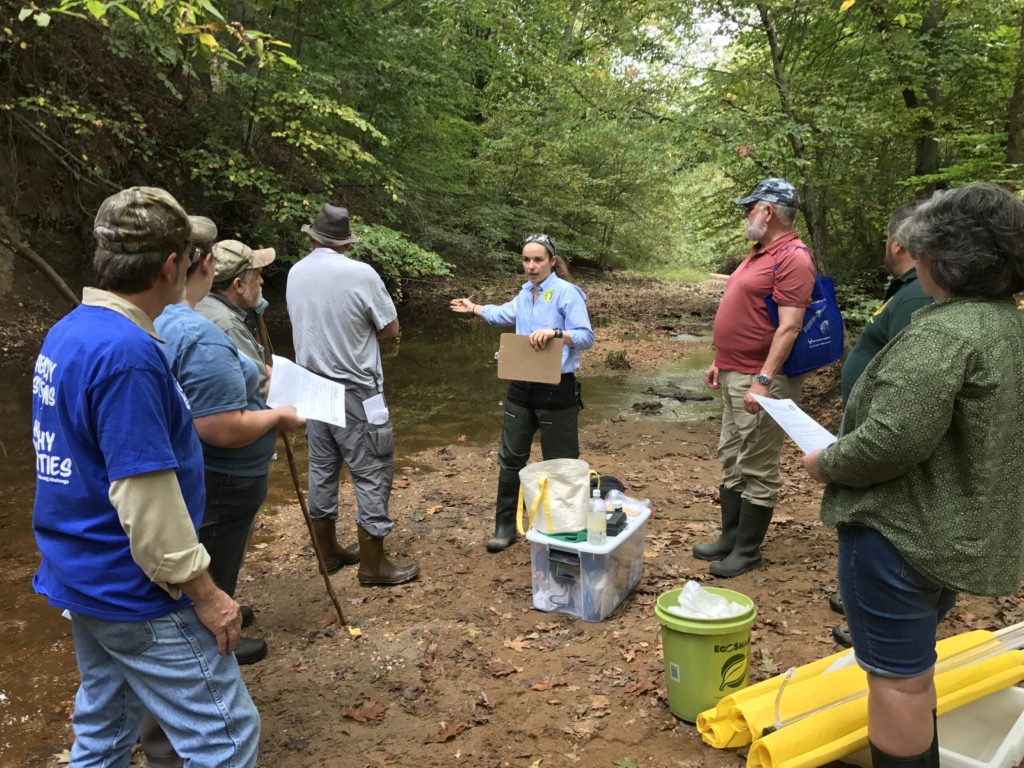
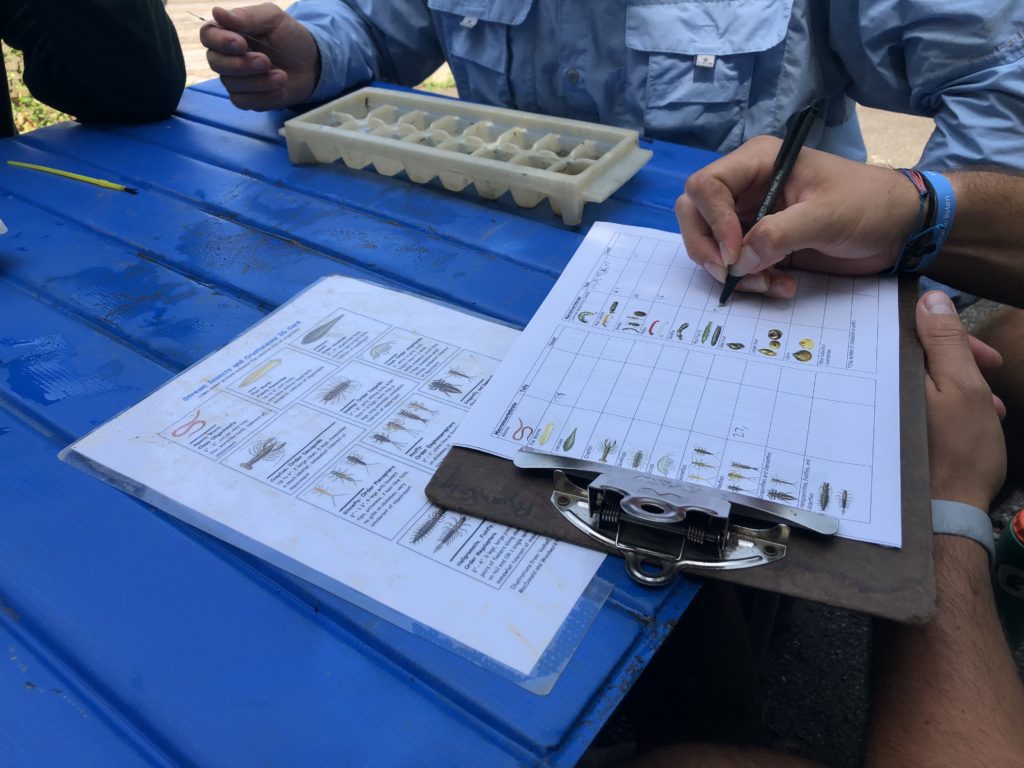
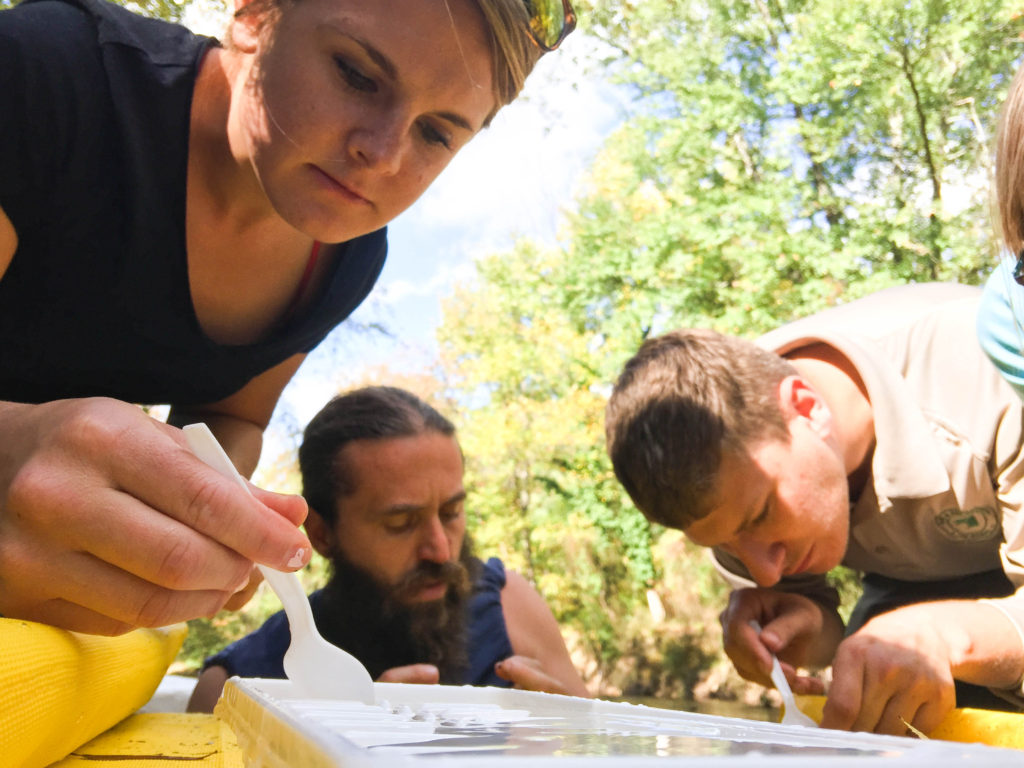
Become a Save Our Streams Monitor
Water quality monitoring is the only way to find out if our streams are healthy and clean enough for both humans and wildlife to use safely. Monitoring data can identify pollution problems, see if pollution regulations are being followed, and gauge whether restoration efforts are successful.
Only 30 percent of rivers and streams in the United States are monitored by government agencies, and even fewer are monitored regularly. Volunteer engagement in stream monitoring is critical to ensure neighborhood waters are safe.
The process to become a certified monitor has 2 fun and easy steps. Once you have completed the two steps below, you will be ready to monitor and collect crucial stream health data in Virginia.
Step 1: Complete the Online Save Our Streams Certification to learn about water quality issues and hone your macroinvertebrate identification skills.
Step 2: Attend a half-day field session to learn the VA SOS data collection protocol.
Step 1: Online Certification
The online certification process includes watching three webinars that will introduce you to water quality issues, macroinvertebrates, and the SOS program. Once you have watched the required webinars, you will complete the registration form listed and receive an email with a link to the macroinvertebrate identification quiz. After passing this quiz you will receive your Macroinvertebrate Identification Certificate. These steps must be taken prior to attending a field training. Once you complete the online training you will be added to an email list to be notified of field trainings in your area.
Step 2: Field Training
Individuals
Curious about the condition of your community’s waterways? We can get your started monitoring and connect you with other monitors in your area.
- Complete the Online Save Our Streams Certification process. Once you have received your Online SOS Certificate, you will be notified of trainings happening near you.
- VA SOS can help connect you with monitoring teams in your area! Your local Soil and Water Conservation District, wildlife conservancy, or land groups may already be monitoring. Email VASOS@iwla.org to get connected!
- Have a group of 10 or more friends or neighbors who want to monitor with you? Fill out the Training Request Form to request a training in your area.
Organizations
Belong to a local club, naturalist group, or land conservancy? You can host a training and we will certify your new stream team!
- Fill out the Training Request Form to request a training be held in your area for your group. VA SOS staff will reach out to set a date.
- Find a training location. Ideal training sites include ample parking close to a stream and easy access into the stream (bathrooms are a plus!)
- Recruit volunteers to become VA SOS monitors for your organization. Promote the event through your local networks.
- After the training, coordinate sites and monitoring efforts for your new monitors.
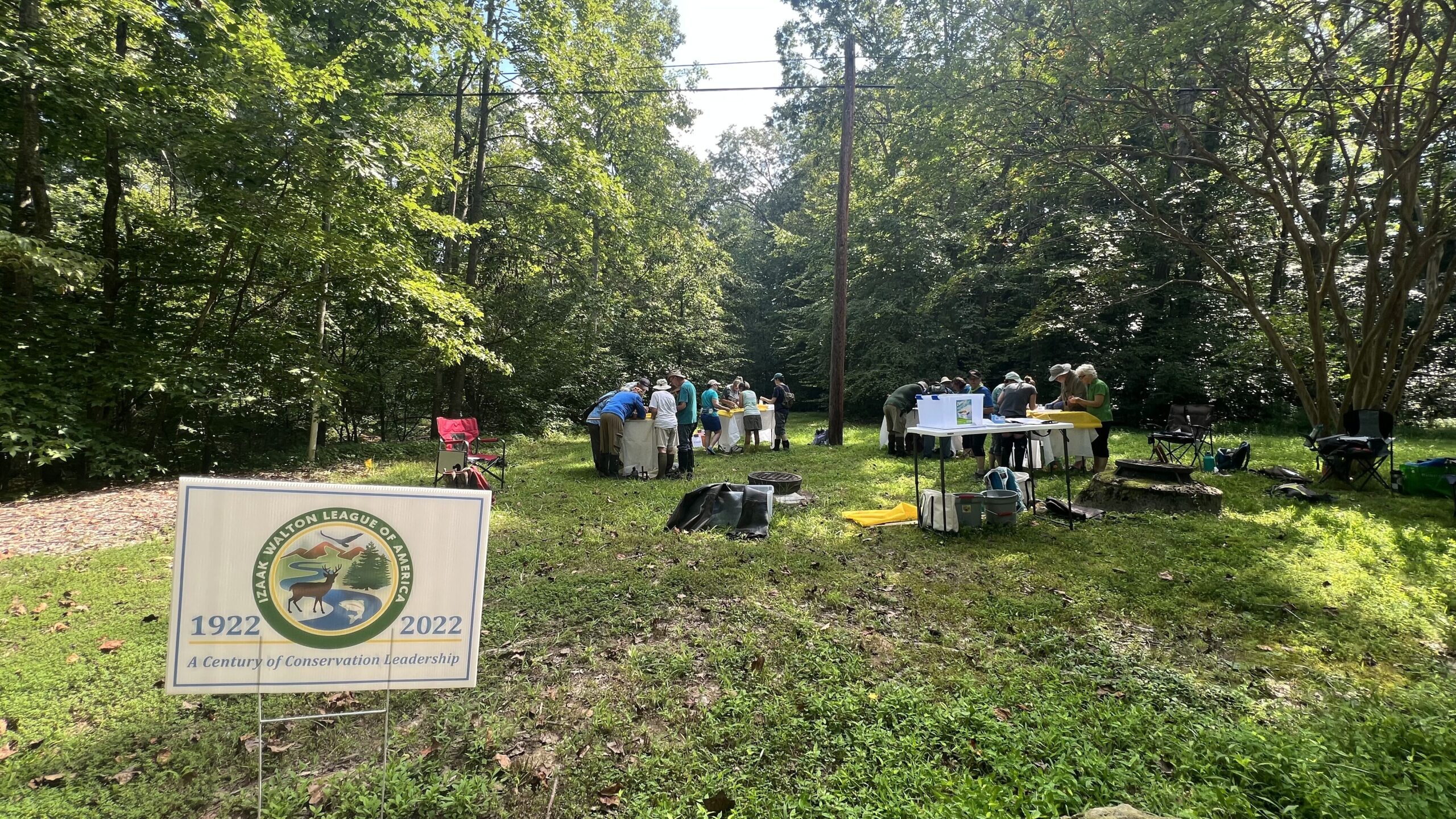
After Certification
- Identify potential monitoring sites. Work with landowners and volunteers to find potential monitoring sites that are safe and accessible. Volunteers are a great resource for local knowledge, and can provide information about areas of monitoring interest like recent construction, potential pollution sources, and more.
- Set a monitoring schedule for the season. Collect and submit your data!
- Recruit new volunteers to join you! Each site needs at least 2 people to successfully monitor it. Only 1 certified monitor needs to be present at each collection for the data to be approved. Bringing community members to your sites can help raise awareness of local water quality issues!
- Want to start training your own monitors? Certified monitors are eligible to become trained as regional trainers after monitoring for at least six months. VA SOS provides train-the-trainers sessions for qualified monitors upon request.
- Explore water quality data in virginia and around the country in the Clean Water Hub.
- Keep learning with Izaak Walton League’s training workshops and Clean Water Webinars.
Maintaining Certification
VA SOS monitors must submit data within a year of their certification training and submit data at least once every 2 years to stay active. If a monitor’s certification lapses they will need to recertify in order for their data to be accepted.
